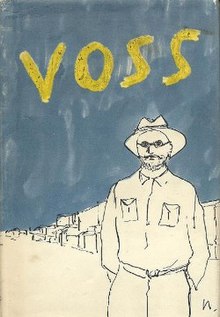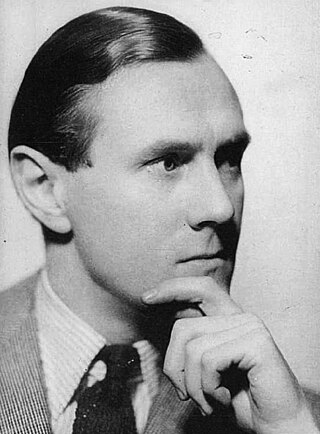
Patrick Victor Martindale White was an Australian novelist and playwright who explored themes of religious experience, personal identity and the conflict between visionary individuals and a materialistic, conformist society. Influenced by the modernism of James Joyce, D. H. Lawrence and Virginia Woolf, he developed a complex literary style and a body of work which challenged the dominant realist prose tradition of his home country, was satirical of Australian society, and sharply divided local critics. He was awarded the Nobel Prize in Literature in 1973, the only Australian to have been awarded the literary prize.

Jane Eyre is a novel by the English writer Charlotte Brontë. It was published under her pen name "Currer Bell" on 19 October 1847 by Smith, Elder & Co. of London. The first American edition was published the following year by Harper & Brothers of New York. Jane Eyre is a bildungsroman that follows the experiences of its eponymous heroine, including her growth to adulthood and her love for Mr Rochester, the brooding master of Thornfield Hall.

Opera Australia is the principal opera company in Australia. Based in Sydney, New South Wales, its performance season at the Sydney Opera House accompanied by the Opera Australia Orchestra runs for approximately eight months of the year, with the remainder of its time spent at the Arts Centre Melbourne, where it is accompanied by Orchestra Victoria. In 2004, the company gave 226 performances in its subscription seasons in Sydney and Melbourne, Victoria, attended by more than 294,000 people.

Joseph Walton Losey III was an American theatre and film director, producer, and screenwriter. Born in Wisconsin, he studied in Germany with Bertolt Brecht and then returned to the United States. Blacklisted by Hollywood in the 1950s, he moved to Europe where he made the remainder of his films, mostly in the United Kingdom. Among the most critically and commercially successful were the films with screenplays by Harold Pinter: The Servant (1963) and The Go-Between (1971).

Friedrich Wilhelm Ludwig Leichhardt, known as Ludwig Leichhardt, was a German explorer and naturalist, most famous for his exploration of northern and central Australia.
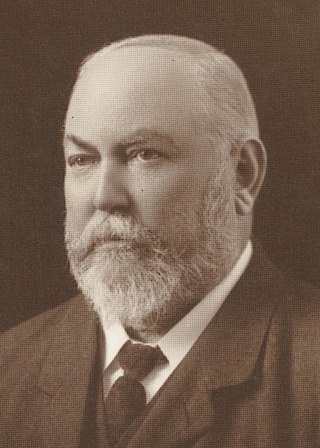
Sir John Forrest was an Australian explorer and politician. He was the first premier of Western Australia (1890–1901) and a long-serving cabinet minister in federal politics.
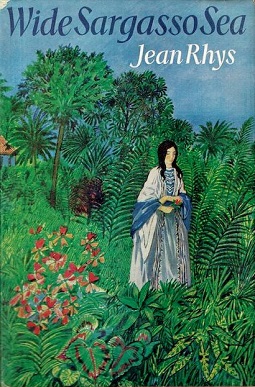
Wide Sargasso Sea is a 1966 novel by Dominican-British author Jean Rhys. The novel serves as a postcolonial and feminist prequel to Charlotte Brontë's novel Jane Eyre (1847), describing the background to Mr. Rochester's marriage from the point of view of his wife Antoinette Cosway, a Creole heiress. Antoinette Cosway is Rhys's version of Brontë's "madwoman in the attic". Antoinette's story is told from the time of her youth in Jamaica, to her unhappy marriage to an English gentleman, Mr. Rochester, who renames her Bertha, declares her mad, takes her to England, and isolates her from the rest of the world in his mansion. Wide Sargasso Sea explores the power of relationships between men and women and discusses the themes of race, Caribbean history, and assimilation as Antoinette is caught in a white, patriarchal society in which she fully belongs neither to Europe nor to Jamaica.
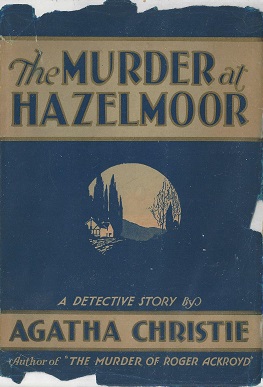
The Sittaford Mystery is a work of detective fiction by British writer Agatha Christie, first published in the US by Dodd, Mead and Company in 1931 under the title of The Murder at Hazelmoor and in UK by the Collins Crime Club on 7 September of the same year under Christie's original title. It is the first Christie novel to be given a different title for the US market. The US edition retailed at $2.00 and the UK edition at seven shillings and sixpence (7/6).
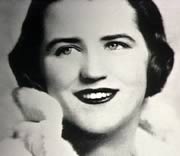
Dame Joan Hilda Hood Hammond, was an Australian operatic soprano, singing coach and champion golfer.

Richard Graham Meale, AM, MBE was an Australian composer of instrumental works and operas.
James David Sharman is an Australian director and writer for film and stage with more than 70 productions to his credit. He is renowned in Australia for his work as a theatre director since the 1960s, and is best known internationally as the director of the 1973 theatrical hit The Rocky Horror Show, its film adaptation The Rocky Horror Picture Show (1975) and the film's follow-up, Shock Treatment (1981).

The Woman in White is Wilkie Collins's fifth published novel, written in 1860 and set from 1849 to 1850. It started its publication on 26 November 1859 and its publication was completed on 25 August 1860. It is a mystery novel and falls under the genre of "sensation novels".

Emmanuel George "Manoly" Lascaris was the life partner of the Australian novelist and dramatist Patrick White. Lascaris met White while they both were servicemen in the Second World War. After the war, Lascaris and White lived together in Cairo, then moved to Sydney, Australia.

Jane Eyre is the fictional heroine and the titular protagonist in Charlotte Brontë's 1847 novel of the same name. The story follows Jane's infancy and childhood as an orphan, her employment first as a teacher and then as a governess, and her romantic involvement with her employer, the mysterious and moody Edward Rochester. Jane is noted by critics for her dependability, strong mindedness, and individualism. The author deliberately created Jane as an unglamorous figure, in contrast to conventional heroines of fiction, and possibly part-autobiographical.
Moffatt Benjamin Oxenbould is a retired Australian opera director.
Voss is an opera by Australian composer Richard Meale with libretto by David Malouf. It is an adaptation of Patrick White's novel of the same name. The opera was commissioned by The Australian Opera, and premiered at the Adelaide Festival in 1986. It was reprised in Adelaide in 2022, in a co-production by State Opera South Australia and Victorian Opera.

My Place is an Australian children's television drama series based on the award-winning picture book of the same name by Nadia Wheatley and Donna Rawlins. The series first screened on ABC3 on weeknights at 8pm from 4 December 2009 and aired in the United States on Vibrant TV Network.
Tracey Moffatt is an Indigenous Australian artist who primarily uses photography and video.

Jane Eyre, the 1847 novel by English writer Charlotte Brontë, has frequently been adapted for film, radio, television, and theatre, and has also inspired a number of rewritings and reinterpretations.
Marilyn Richardson is an Australian operatic soprano. She sang Laura in the first performances of Richard Meale's opera, Voss.
